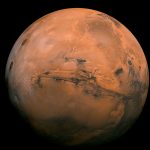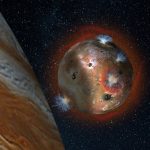We Just Learned A Lot Of Unexpected Things About Jupiter0
- From Around the Web, Space
- May 30, 2017
Forget everything you knew about gas giants, because based on the latest results from the Juno mission, we were wrong. We were so wrong.

Forget everything you knew about gas giants, because based on the latest results from the Juno mission, we were wrong. We were so wrong.

Early science results from NASA’s Juno mission to Jupiter portray the largest planet in our solar system as a complex, gigantic, turbulent world, with Earth-sized polar cyclones, plunging storm systems that travel deep into the heart of the gas giant, and a mammoth, lumpy magnetic field that may indicate it was generated closer to the planet’s surface than previously thought.

Here are eight surprising things NASA has learned so far.

The gas giants have always been a mystery to us. Due their dense and swirling clouds, it is impossible to get a good look inside them and determine their true structure. Given their distance from Earth, it is time-consuming and expensive to send spacecraft to them, making survey missions few and far between. And due

Mars can blame Jupiter for its small stature. The Red Planet may be much smaller than we expect because Jupiter’s gravity beat it up as it was forming.

On April 3, 2017, as Jupiter made its nearest approach to Earth in a year, NASA’s Hubble Space Telescope viewed the solar system’s largest planet in all of its up-close glory.

NASA’s Juno spacecraft entered safe mode Tuesday, Oct. 18 at about 10:47 p.m. PDT (Oct. 19 at 1:47 a.m. EDT). Early indications are a software performance monitor induced a reboot of the spacecraft’s onboard computer.

The company had announced that the Hubble Space Telescope had captured ‘surprising evidence of activity’ on Europa – which made many think that aliens might have been found.

Venus and Jupiter had a wonderful dance in the sky this weekend.

Jupiter’s volcanic moon Io has a thin atmosphere that collapses in the shadow of Jupiter, condensing as ice, according to a new study by NASA-funded researchers. The study reveals the freezing effects of Jupiter’s shadow during daily eclipses on the moon’s volcanic gases.